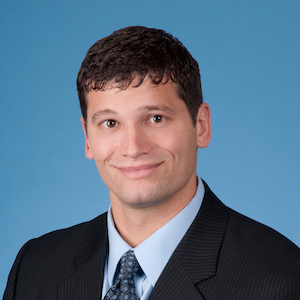In order for claims to be found patent-eligible under 35 U.S.C. § 101, the claim elements as a whole should recite more than generic and functional hardware. Improving an abstract concept using a computer only as a tool is insufficient for finding claim language patent eligible that otherwise would be patent-ineligible.
 The United States Court of Appeals for the Federal Circuit recently ruled on a Patent Trial and Appeal Board (Board) Covered Business Method (CBM) Decision, affirming the Board’s holding that certain challenged claims of Customedia Technology’s patents are unpatentable as directed to the abstract idea of delivering targeted advertising using a computer. See Customedia Techs., LLC v. Dish Network Corp., 2018-2239, 2020 U.S. App. LEXIS 7005 (Fed. Cir. Mar. 6, 2020) (Before Prost, Chief Judge, Dyk and Moore, Circuit Judges) (Opinion for the Court, Prost, Chief Judge).
The United States Court of Appeals for the Federal Circuit recently ruled on a Patent Trial and Appeal Board (Board) Covered Business Method (CBM) Decision, affirming the Board’s holding that certain challenged claims of Customedia Technology’s patents are unpatentable as directed to the abstract idea of delivering targeted advertising using a computer. See Customedia Techs., LLC v. Dish Network Corp., 2018-2239, 2020 U.S. App. LEXIS 7005 (Fed. Cir. Mar. 6, 2020) (Before Prost, Chief Judge, Dyk and Moore, Circuit Judges) (Opinion for the Court, Prost, Chief Judge).
Customedia Technologies LLC (Customedia) owns U.S. Patent No. 8,719,090 (the ’090 patent) and U.S. Patent No. 9,053,494 (the ’494 patent), both sharing a specification and directed to “comprehensive data management and processing systems.” Claim 1 of the ’090 patent is representative of the claims at issue on appeal:
-
A data delivery system for providing automatic delivery of multimedia data products from one or more multimedia data product providers, the system comprising:
a remote account transaction server for providing multimedia data products to an end user, at least one of the multimedia data products being specifically identified advertising data; and
a programmable local receiver unit for interfacing with the remote account transaction server to receive one or more of the multimedia data products, said programmable local receiver unit including at least one individually controlled and reserved advertising data storage section adapted specifically for storing the specifically identified advertising data, said at least one advertising data storage section being monitored and controlled by said remote account transaction server and such that said specifically identified advertising data is delivered by said remote account transaction server and stored in said at least one individually controlled and reserved advertising data storage section.
This case arises from a challenge of Customedia’s patents by Dish Network Corporation and Dish Network LLC (collectively “Dish”), in which Dish petitioned for review of certain claims of the ’090 patent and the ’494 patent under the Transitional Program for Covered Business Method Patents (CBM review). The Board instituted CBM review of both patents and found certain claims of the ’090 and ’494 patents ineligible under 35 U.S.C. § 101 and § 102. Customedia timely appealed the Board’s decision with respect to the §§ 101 and 102 rejections.
On appeal, the Federal Circuit reviewed the Board’s legal conclusions de novo and its factual findings for substantial evidence. Section 101 provides that “[w]hoever invents or discovers any new and useful process, machine, manufacture, or composition of matter, or any new and useful improvement thereof,” may obtain a patent. 35 U.S.C. § 101. In Alice Corp. Pty. Ltd. V. CLS Bank Int’l, the Supreme Court provided a two-step framework for determining patent eligibility under § 101. 573 U.S. 208, 216 (2014). Specifically, the Court held that “[l]aws of nature, natural phenomena, and abstract ideas are not patent eligible.” Id. at 217. According to the Supreme Court in Alice, first, the court must determine whether the claims are directed to a “patent-ineligible concept,” such as an abstract idea. Id. If so, the court “consider[s] the elements of each claim both individually and ‘as an ordered combination’ to determine whether the additional elements ‘transform the nature of the claim’ into a patent-eligible application.” Id. (quoting Mayo Collaborative Servs. v. Prometheus Labs., Inc., 566 U.S. 66, 78–79 (2012)).
Here, the Federal Circuit considered Customedia’s argument that the claims are patentable under § 101 because the claims “provide for improvements to the operation and functioning of computer systems.” Customedia argued that providing a reserved and dedicated section of storage, as in the claims, improves the data delivery system’s ability to store advertising data, transfers data at improved speeds, and prevents system inoperability due to insufficient storage. However, the Federal Circuit did not find this sufficient for finding an improvement to the functionality of the computer itself. Instead, the court held that “the claimed invention merely improves the abstract concept of delivering targeted advertising using a computer only as a tool.” (Emphasis added).
The Federal Circuit compared the claims in the instant case to cases instructive on the § 101 determination, finding that the instant claims were more similar to claims which are rejected under § 101 for “improving a fundamental practice or abstract process by invoking a computer merely as a tool.” In its holding, the Federal Circuit highlights that the § 101 inquiry “often turns on whether the claims focus on ‘the specific asserted improvement in computer capabilities . . . or, instead, on a process that qualifies as an “abstract idea” for which computers are invoked merely as a tool.’” Finjan, Inc. v. Blue Coat System, Inc., 879 F.3d 1299, 1303 (Fed. Cir. 2018) (quoting Enfish, LLC v. Microsoft Corp., 822 F.3d 1327, 1335–36 (Fed. Cir. 2016)). Ultimately, the Federal Circuit found that the instant claims were directed to a patent-ineligible concept at Alice step one and continued the analysis under the Alice framework to ask whether the elements of the claims were sufficient to “transform the nature of the claim” into a patent-eligible application. Mayo Collaborative Servs. v. Prometheus Labs., Inc., 566 U.S. 66, 78–79 (2012).
Under Alice step two, the Federal Circuit found that the claims recited only generic computer components, and therefore the claim elements were insufficient under Alice step two to “transform the nature of the claim[s]” into patent-eligible subject matter. The Federal Circuit’s analysis partly relied on the patent specification’s recital of generic hardware components, finding that “such generic and functional hardware is insufficient to render eligible claims directed to an abstract idea.” Accordingly, the Federal Circuit affirmed the Board’s finding with respect to the unpatentability of certain claims of ’090 and ’494 patents under 35 U.S.C. § 101.
Because the Federal Circuit upheld the Board’s decision with respect to § 101, the Federal Circuit did not reach the § 102 issues in the appeal.

![[IPWatchdog Logo]](https://ipwatchdog.com/wp-content/themes/IPWatchdog%20-%202023/assets/images/temp/logo-small@2x.png)


![[Advertisement]](https://ipwatchdog.com/wp-content/uploads/2024/04/UnitedLex-May-2-2024-sidebar-700x500-1.jpg)
![[Advertisement]](https://ipwatchdog.com/wp-content/uploads/2024/04/Artificial-Intelligence-2024-REPLAY-sidebar-700x500-corrected.jpg)
![[Advertisement]](https://ipwatchdog.com/wp-content/uploads/2024/04/Patent-Litigation-Masters-2024-sidebar-700x500-1.jpg)

![[Advertisement]](https://ipwatchdog.com/wp-content/uploads/2021/12/WEBINAR-336-x-280-px.png)
![[Advertisement]](https://ipwatchdog.com/wp-content/uploads/2021/12/2021-Patent-Practice-on-Demand-recorded-Feb-2021-336-x-280.jpg)
![[Advertisement]](https://ipwatchdog.com/wp-content/uploads/2021/12/Ad-4-The-Invent-Patent-System™.png)






Join the Discussion
7 comments so far.
LazyCubicleMonkey
March 17, 2020 12:12 pmHow is this not a standard server/client architecture where the client has access to local storage? (If you’re using chrome, right click and select ‘Inspect’, to the ‘Application’ tab, and take a look at the cache section. Voila! Storage!)
Anon
March 16, 2020 06:22 amangry dude,
It is not helpful to provide a link to a Per Curiam decision.
Is there a link to a substantive decision so that one may review the pertinent facts?
Further, if your beef is not with the particulars of the case, then please say so (this is what another has done). In that case, you would be better off providing a link to the actual law written by Congress that provides for the ability of the patent office to step into the shoes of the petitioner and carry on the battle that the petitioner started.
While in both cases I “get” that the Ends are the same (the Office is NOT acting like a true Licensor), the objective path forward is to focus on the Means to those Ends.
angry dude
March 15, 2020 10:52 pmMartin Nguyen@2
“…inventors who have those granted patents should sue the USPTO for misdirecting or misleading the people”
Yeah.. right… dude…good luck with that 🙂
https://law.justia.com/cases/federal/appellate-courts/cafc/19-1696/19-1696-2020-03-06.html
The infringer backed out of appeal and the inventor should have won. But that didn’t happen. The inventor had to fight the USPTO directly because the USPTO stepped in for the infringer to fight the inventor, and the inventor lost.
The USPTO provided their attorneys to fight for the infringer and invalidated the patent it had issued (at great cost to inventor far exceeding USPTO fees)
This is like you sue the guy who stole your wallet but the court decides that you must give the thief more of your money !!!
Welcome to America circa 2020 !
Judge and Jury
March 15, 2020 06:58 pmOnce again, Judge Prost comes to the rescue to kill a patent that is both new and useful. It is directed to more efficient advertising networks. She is a complete clown.
Concerned
March 15, 2020 03:51 pmMy examiner makes the argument that I simply use a computer as a tool for an abstract concept. Moreover, my process allegedly automates a manual process. Of course there was no proof offered by the examiner, simply an unsubstantiated allegation. We repeat Berkheimer.
The fact of the matter is my process was invented by me in 2014. There was or never has been a manual version of my process to automate or expedite. If computers were never invented, my process would have still been invented in 2014. The problem has escaped a solution by the working professionals and experts since the inception of the benefit program in 1956.
My inventive concept does need a computer and a network because the problem is rooted in the on line benefit network of the Social Security administration.
My inventive concept has never been used in commerce in any field, with a computer or without a computer. The concept is not a fundamental practice, I challenge people to think of one situation that uses my concept. Nobody has thought of one situation in any field of commerce that uses my inventive concept upon taking the challenge.
The examiner has never disputed anything noted above in the record and admits in the appeal I solved a business problem., but not a computer problem.
Since when are patents just for computer problems? Patents were put in the constitution in 1789, basically 190 years (?) before the advent of computers. Who comes up with such “computer” nonsense?
Hopefully the PTAB will hold the examiner accountable. Either the examiner proves his allegations, which means he has to disprove the mountain of hard evidence I submitted from my field of commerce, or I should get my patent.
One poster on this forum told me that the PTAB would have to mis-represent my entire record and toss 75% of the claims for me to lose the appeal. Other people sadly told me to not discount such a possibility, it is contingent on which panel I draw. In addition, one attorney posted he would not give me the patent and in the same sentence stated his position is outside the law. Wow what a rule of law environment or lack there of.
Time will tell.
Martin Nguyen
March 15, 2020 11:49 amI’m not an attorney so I don’t know the law. I just use my two cents.
-If the people continue having the mindset as “computers are invoked merely as a tool”, particularly in the innovating process then there would not be a huge computer improvements, computer evolution as of today in the modern world.
-And if the PTAB and the court continue to invalidate or dismiss granted computer process-related patents, inventors who have those granted patents should sue the USPTO for misdirecting or misleading the people.
Pro Say
March 14, 2020 07:16 pmJefferson Airplane knew what Alice could do:
https://www.youtube.com/watch?v=hWWsfrfq69A
Just. Ask (invoke). Alice.